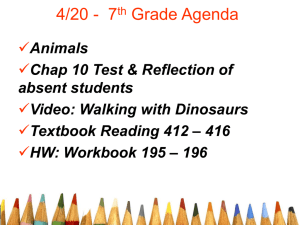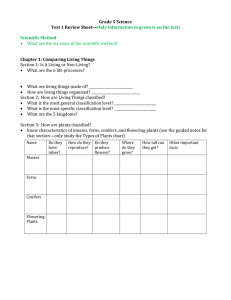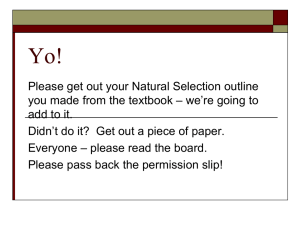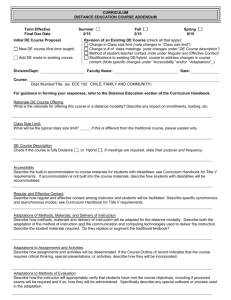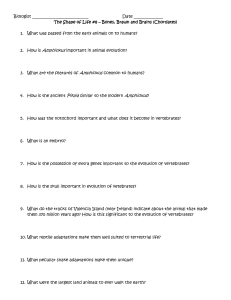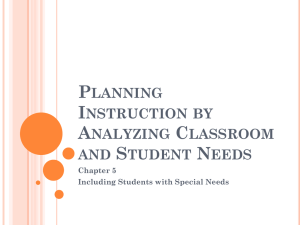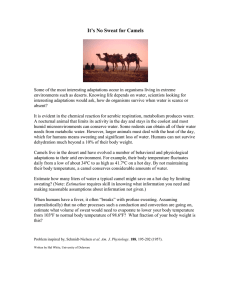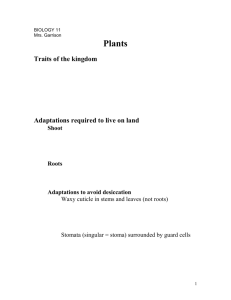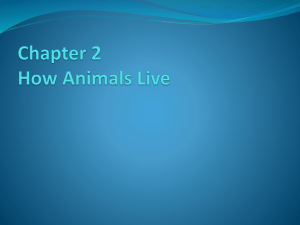Chapter 12 Notes Section 12.1 – Is It An Animal? Animal
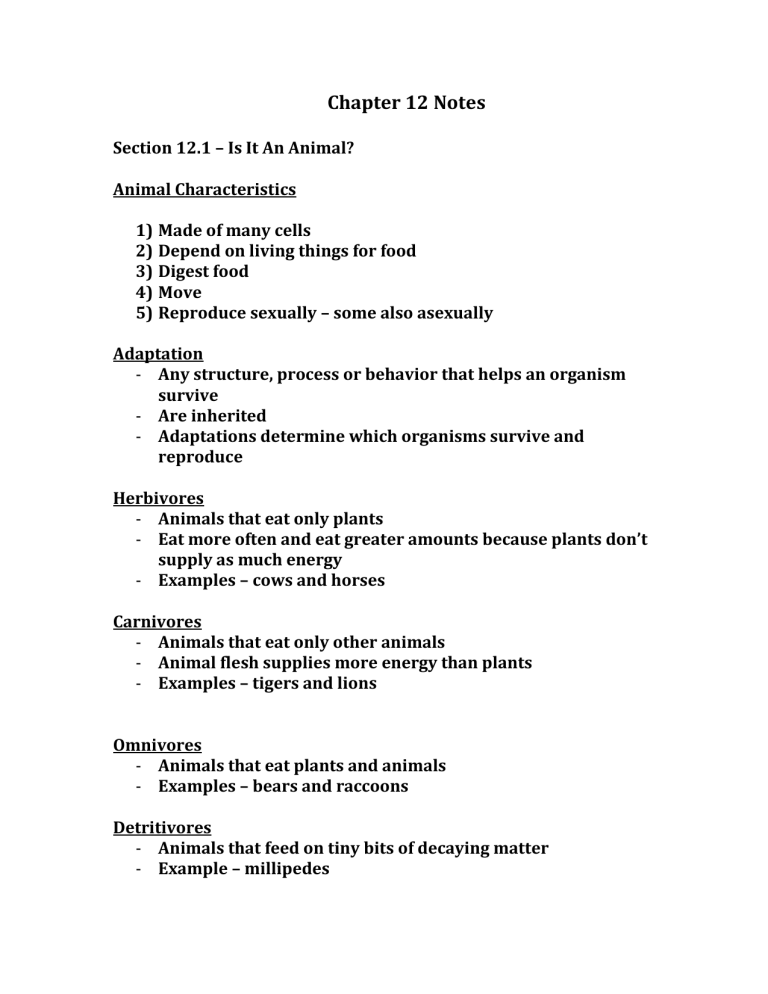
Chapter 12 Notes
Section 12.1 – Is It An Animal?
Animal Characteristics
1) Made of many cells
2) Depend on living things for food
3) Digest food
4) Move
5) Reproduce sexually – some also asexually
Adaptation
Any structure, process or behavior that helps an organism survive
Are inherited
Adaptations determine which organisms survive and reproduce
Herbivores
Animals that eat only plants
Eat more often and eat greater amounts because plants don’t supply as much energy
Examples – cows and horses
Carnivores
Animals that eat only other animals
Animal flesh supplies more energy than plants
Examples – tigers and lions
Omnivores
Animals that eat plants and animals
Examples – bears and raccoons
Detritivores
Animals that feed on tiny bits of decaying matter
Example – millipedes
Physical Adaptations
1) Outer coverings – camouflage
2) Sharp quills or shells
3) Size – large animals are usually safer
4) Mimicry
Behavior Adaptations
1) Spray chemicals – skunk
2) Release an ink cloud – octopus
3) Run fast
4) Travel in groups
Animal Classification
2 Major Groups of Animals
1) Vertebrates – Animals with a backbone
2) Invertebrates a.
Animals without a backbone b.
97% of all animals are invertebrates c.
Most have outer coverings that protect them
Symmetry – how body parts are arranged
1) Asymmetrical a.
No definite shape b.
Example – sponge
2) Radial a.
Parts are arranged in a circle around a center point b.
Examples – hydras, jellyfish and sea urchins
3) Bilateral a.
An animal can be divided into right and left halves b.
Examples – human, dog and cat

